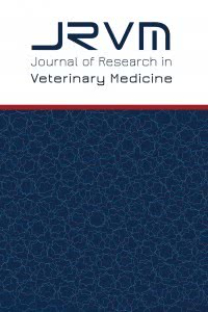ATIKSU TOPLAMA SİSTEMLERİNDEKİ İŞLETME PROBLEMLERİNİN TANIMLANMASI
atıksu toplama sistemleri, kanalizasyon tıkanma nedenleri, tüketici hataları, inşaat hataları
Key Causes of Blockages in Wastewater Collection Systems
Wastewater collection systems, causes of sewer blockages, consumer errors, construction problems,
___
- 1. Ashley, R. M., Bertrand-Krajewski, J. -L. Hvitved-Jacobsen, T., Verbanck, M. (2004) Solids in sewers: Characteristics, effects and control of sewer solids and associated pollutants. Scientific and Technical Report No.14. IWA Yayınları, Londra.
- 2. Brown, D. M., Butler, D., Orman, N. R., Davies, J. W. (1996) Gross solids transport in small diameter sewers, Water Science and Technology, 33(9), 25-30. doi: 10.2166/wst.1996.0168
- 3. Durukan, S. ve Karadagli, F. (2019) Physical characteristics, fiber compositions, and tensile properties of nonwoven wipes and toilet papers in relevance to what is flushable. Science of the Total Environment, 697, 134135. doi: 10.1016/j.scitotenv.2019.13413
- 4. He, X., De Los Reyes, F. L., Leming, M., Dean, L. O., Lappi, S. E., Ducoste, J. J. (2013) Mechanisms of fat, oil, and grease (FOG) deposit formation in sewer lines, Water Research, 47, 4451-4459. doi: 10.1016/j.watres.2013.05.002
- 5. Karadagli, F., McAvoy, D. C., Rittmann, B. E. (2009) Development of a Mathematical Model for Physical Disintegration of Flushable Consumer Products in Wastewater Systems, Water Environment Research, 81 (5), 459-465. doi: 10.2175/106143008X357101
- 6. Karadagli, F., Rittmann, B. E., McAvoy, D. C., Richardson, J. E. (2012) Effect of turbulence on disintegration rate of flushable consumer products, Water Environment Research, 84 (5), 424-433. doi: 10.2175/106143012X13354606450960
- 7. Keener, K. M., Ducoste, J. J., Holt, L. M. (2008) Properties influencing fat, oil, and grease deposit formation, Water Environment Research, 80 (12), 2241-2246. doi: 10.2175/193864708X267441
- 8. Shahsavari, G., Arnaud-Fasseta, G., Campisano, A. (2017) A field experiment to evaluate the cleaning performance of sewer flushing on non-uniform sediment deposits, Water Research, 118, 59-69. doi: 10.1016/j.watres.2017.04.026
- 9. Tang, Y. ve Jin, W.Y. (2013) Study on flushability testing of wood pulp composite spunlaced nonwovens, Advanced Materials Research, 610-613, pp. 490-493. doi: 10.4028/www.scientific.net/AMR.610-613.490
- 10. United States Environmental Protection Agency (USEPA) (2004) Report to congress: Impacts and controls of CSOs and SSOs, EPA 833-R-04-001, Office of Water, Washington, D.C., U.S.A. https://www.epa.gov/sites/default/files/2015-10/documents/csossortc2004_full.pdf
- 11. Vernback, M.A. (1995) Capturing and releasing settleable solids: The significance of dense undercurrents in combined sewer flows, Water Science and Technology, 31(7), 85-93. doi: 10.2166/wst.1995.0207
- 12. Vollertsen, J., Almedia, M. D. C., Hvitvat-jacobsen, T. (1999) Effects of temperature and dissolved oxygen on hydrolysis of sewer solids, Water Research, 33(14), 3119-3126. doi: 10.1016/S0043-1354(99)00032-9
- ISSN: 2148-4147
- Yayın Aralığı: 3
- Başlangıç: 2002
- Yayıncı: BURSA ULUDAĞ ÜNİVERSİTESİ > MÜHENDİSLİK FAKÜLTESİ
BİYOMEDİKAL UYGULAMALARINDA EKLEMELİ İMALAT TEKNOLOJİLERİ
Kübra SIVACI, Elif Ecem ÖZGÜVENÇ, Yahya BOZKURT
KESİT ŞEKLİNİN POLİ (L-LAKTİK ASİT) FİLAMENT İPLİK ÖZELLİKLERİNE ETKİSİ
PARÇA ISKARTALARININ MAKİNE ÖĞRENMESİ KULLANILARAK AZALTILMASI: OTOMOTİV SEKTÖRÜNDE BİR UYGULAMA
Burak Celal AKYÜZ, Emine EŞ YÜREK, Betül YAĞMAHAN, Ebubekir Sıddık SAMAST, Nezire Dilan ÇETREZ
SERA DERESİ HAVZASINDA (TRABZON) ASKIDA KATI MADDE HAREKETİNİN İNCELENMESİ VE DEĞERLENDİRİLMESİ
Betül METE, Osman Tuğrul BAKİ, Adem BAYRAM
Yasemin POYRAZ KOÇAK, Selçuk SEVGEN
HİBRİT MİKROŞERİT-YTED BANT GEÇİREN FİLTRENİN X-BANT’TA TASARIMI VE OPTİMİZASYONU
Kemal GÜVENLİ, Sibel YENİKAYA, Mustafa SEÇMEN
UV-C AKTİVASYONU İLE ÜRETİLMİŞ SÜLFAT RADİKALLERİNİN BAKTERİ İNAKTİVASYONUNA ETKİSİ
Gamze ŞENER, Sevil ÇALIŞKAN ELEREN
Sinan NACAR, Osman Tuğrul BAKİ, Adem BAYRAM
